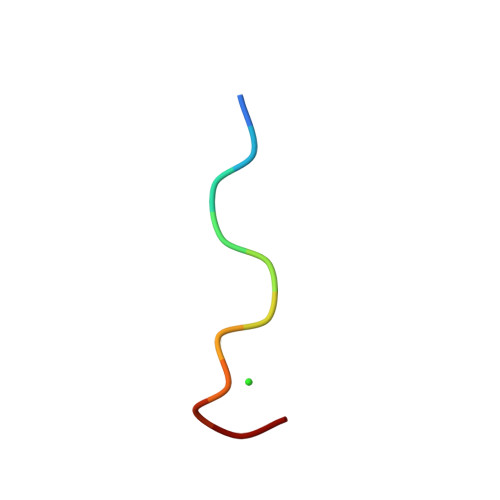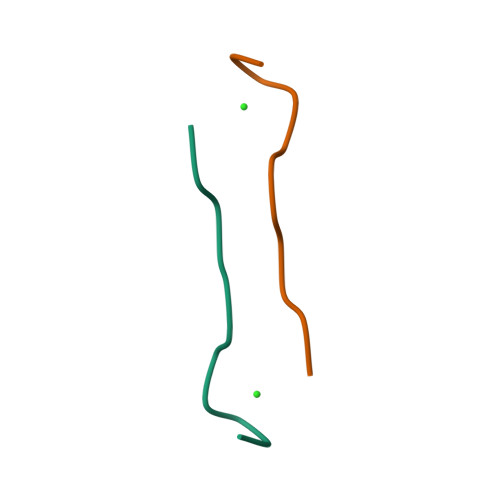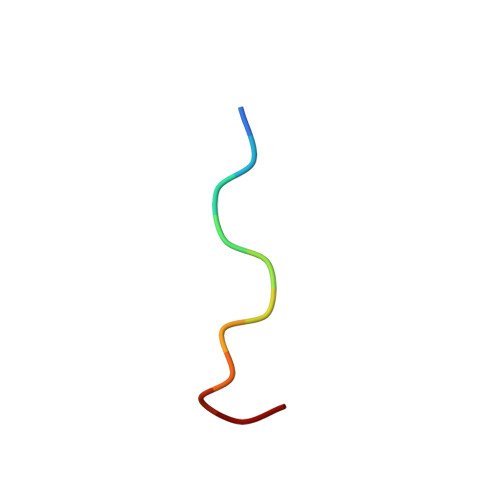Design, Synthesis, and Study of Lactam and Ring-Expanded Analogues of Teixobactin.
Yang, H., Pishenko, A.V., Li, X., Nowick, J.S.(2020) J Org Chem 85: 1331-1339
- PubMed: 31746604
- DOI: https://doi.org/10.1021/acs.joc.9b02631
- Primary Citation of Related Structures:
6PSL - PubMed Abstract:
This paper describes the chemical synthesis, X-ray crystallographic structure, and antibiotic activity assay of lactam analogues of teixobactin and explores ring-expanded analogues of teixobactin with β 3 -homo amino acids. Lactam analogues of teixobactin containing all four stereoisomers of aza-threonine at position 8 were synthesized on a solid support from commercially available stereoisomeric threonine derivatives. The threonine stereoisomers are converted to the diastereomeric aza-threonines by mesylation, azide displacement, and reduction during the synthesis. d-Aza-Thr 8 ,Arg 10 -teixobactin exhibits 2-8-fold greater antibiotic activity than the corresponding macrolactone Arg 10 -teixobactin. Azateixobactin analogues containing other stereoisomers of aza-threonine are inactive. A dramatic 16-128-fold increase in the activity of teixobactin and teixobactin analogues is observed with the inclusion of 0.002% of the mild detergent polysorbate 80 in the MIC assay. The X-ray crystallographic structure of N -Me-d-Gln 4 ,d-aza-Thr 8 ,Arg 10 -teixobactin reveals an amphipathic hydrogen-bonded antiparallel β-sheet dimer that binds chloride anions. In the binding site, the macrolactam amide NH groups of residues 8, 10, and 11, as well as the extra amide NH group of the lactam ring, hydrogen bond to the chloride anion. The teixobactin pharmacophore tolerates ring expansion of the 13-membered ring to 14-,15-, and 16-membered rings containing β 3 -homo amino acids with retention of partial or full antibiotic activity.
Organizational Affiliation:
Department of Chemistry and Department of Pharmaceutical Sciences , University of California , Irvine , California 92697-2025 , United States.



















